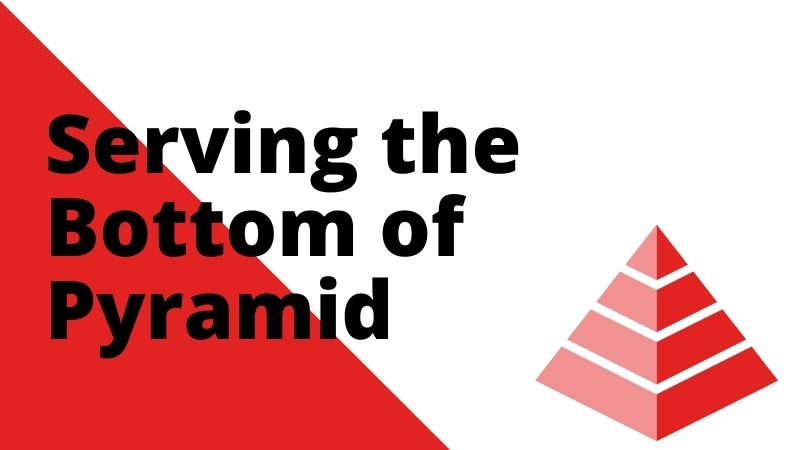BOP or Bottom of the Pyramid refers to a model of marketing that serves the major chunk of the population in developing countries which is at the bottom of the socio-economic pyramid. This group comprises of lower middle class as well as below lower middle-class households. Do you know - when computed on a global scale, BOP population stands at more than 4 billion. and that roughly constitutes about 50% of the world's population. These are people who may be categorised as bottom of pyramid and many corporations have tried to cater to this huge market by adopting various forms of BOP business strategies. Unless done with perfection, there could be significant chances of the initiative turning into non-profit organizations. This has occurred multiple times in the past.
A major division of the emerging BOP market belongs to the developing countries in South Asia, South-East Asia and the Middle-East. In India alone, this market constitutes about a billion of its population of around 120 million households.
It was Mr. C. K. Prahalad, a management and corporate strategist who, in his book, Fortune at the Bottom of the Pyramid, familiarized this demographic group as a consumer base with enormous potential to spend, ensuring the generation of profits for the companies. To sell to this section of the population is onerous but manageable. An essential business model targeting the BOP segment and working on fundamental components like transforming the demand outcomes of this segment as well as evolving the supply chain mechanism and becoming responsive to the needs of this segment can generate sizable results.
Sectors like Fast-Moving Consumer Goods, Microfinance, Insurance, Automobile, ICT, Health and Education are all open and up for grabs in the BOP market. As a consequence Multinational Companies are concentrating their capacities and resources on catering to this untapped market space with a huge consumption potential. In rural markets and in urban markets around the slum areas, thronged by farm labourers and daily wage earners, the local grocers sell almost everything that a household may require. From hair oil to snacks and biscuits, shampoo and other toiletries as well as cosmetic products. But these products are sold in small sachets and packets ranging from Rs 1 to Rs 2030. This is an essential strategy for how the FMCG companies are tapping the potential of the BOP market. They are using micro pack sizes which are affordable for a slum dweller or a daily wage labourer in urban as well as rural areas.
Companies are also innovating and attracting the BOP through products that are explicitly just food and beverage products but are implicitly meant to provide vital nutrients like vitamins, iron, zinc and iodine. This implicit objective to provide nutrition through fortified powdered drinks and other nutritional snacks, also coincides with a company's Corporate Social Responsibility, while generating profits.
Companies, to advance their business in the BOP segment, are putting themselves out and are determined to realize their goals. They are squeezing their products short to maximize the market base and earn as much as possible. Products are being customized to suit the inclinations and requirements of this group. However, it's not a sustainable approach as it is bound to give diminishing and negative returns in the long run.
What's important, and can also prove to be a viable course of action for the companies is to indulge in "inclusive marketing". In this, the BOP segment will not only be seen as a market by the companies but steps will also be taken to strengthen their economic position by up-gradation of their skills through Corporate Social Responsibility contributions and other innovative ideas.
Compared with a governmental social responsibility project, a profitable corporate stands a better chance of being able to increase its scale and impact the lower echelons of any society. But all these corporations need to remember that business exists because there is profit and which sustain the existence of entity. Blinded by devotion to social well being, many companies have overwhelmed their capacity and resources and have ended up in non supported non profit entities.
A realistic assessment of the challenges at the bottom of the pyramid should be done along with inclusive approach towards skilling, behavioural and consumption trends, educations, localisation of production resources and thereby, helping companies generate the appropriate return on investment that will make socially beneficial businesses sustainable over the long term.
